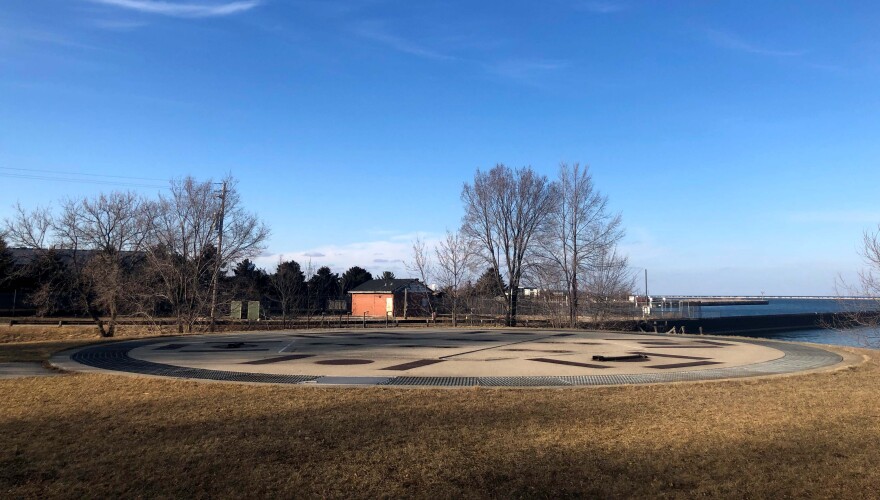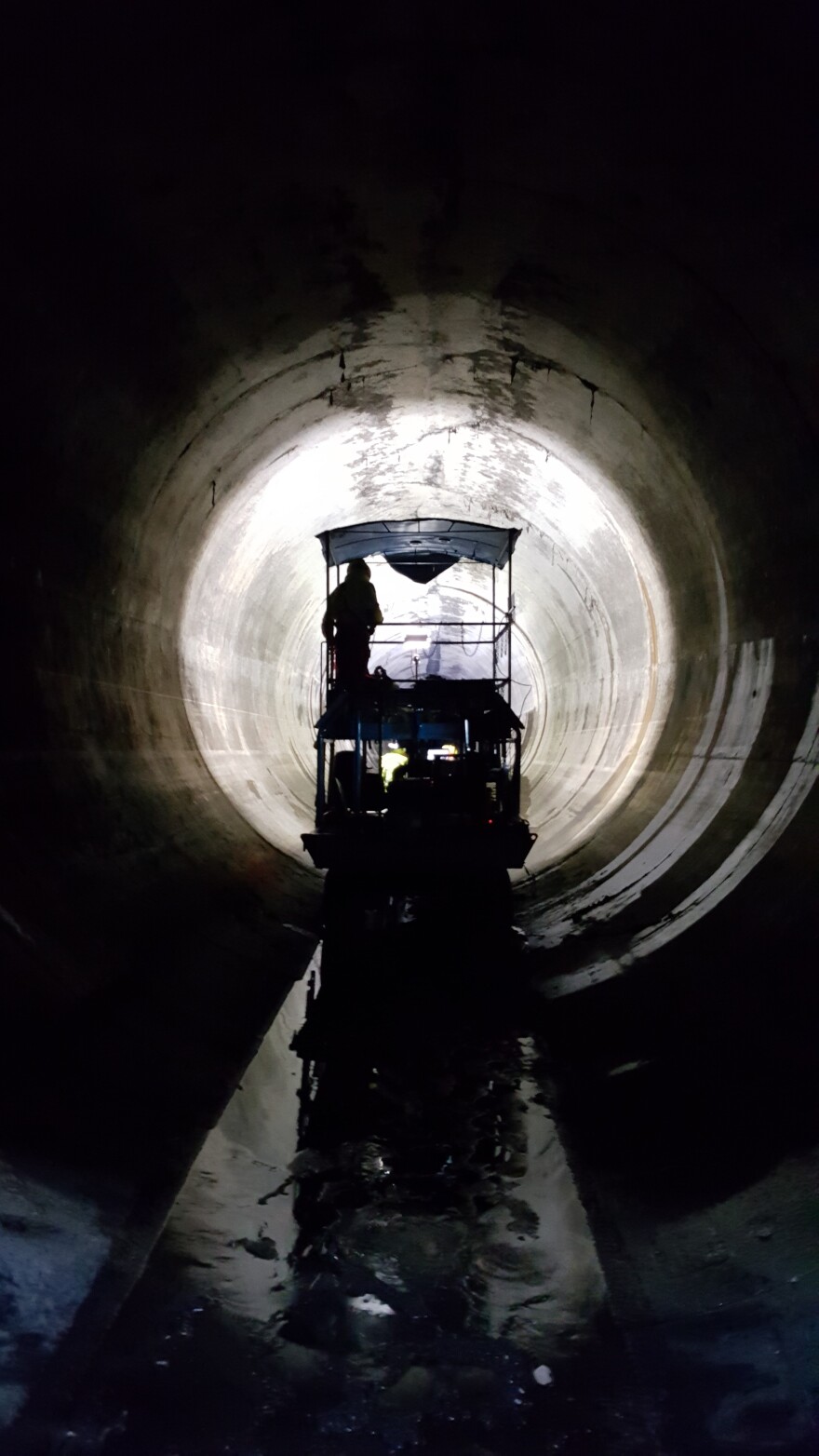Art? Landing site for aliens? The story behind the giant metal circle at Milwaukee’s Cupertino Park
If you’ve ever walked or biked along Milwaukee’s lakefront, there are some interesting sites to see.
Bubbler Talk question asker Tom Roberts from Milwaukee stumbled upon something that made him pause. While biking through Cupertino Park in Bay View, he spotted something that caught his eye. And he asked:
I was at north Cupertino Park recently. What is the concrete/metal structure on the grass next to the water? Art? Landing site for aliens?
Right away, the theory that it is art was ruled out. There is no signage around the structure and it was not located on any public art registry.
But there was still the aliens theory. To find out more, I spoke with Tea Krulos. He is a Milwaukee-based freelance journalist and author who writes about topics like subcultures, weird news and the paranormal.
Krulos says, “Definitely looks like a UFO landing pad of some sort. And it’s a great location if you want to land your UFO because it has a very nice view of Lake Michigan there.”

Mallory Cheng
/
WUWM
Unfortunately, according to Krulos, it’s not a known UFO landing site or a place where aliens have been spotted. But while walking around the structure, he noticed a small shed nearby.
READ: Four notable UFO sightings in Wisconsin to learn about
“On the door it has a sign that notes it’s the property of the sewerage district. They probably are the ones that created this, not an alien race,” he says.
Bill Graffin is the public information manager with the Milwaukee Metropolitan Sewerage District. Apparently, the structure isn’t supernatural at all.
“It’s an access shaft for the Deep Tunnel,” Graffin says. “The Deep Tunnel is 28.5 miles long. Most of it is 300 feet underground, there’s a stretch that’s about 165 feet underground.”
[embedded content]
He goes on to say, “Originally for the construction of the tunnel, all the equipment was lowered down and then because the tunnel is carved out of bedrock they were all brought up through the access shafts. There are several of them throughout the community.”
A few other similar looking access shafts are located in Milwaukee — one of them is just north of American Family Field.
And another is at Baran Park near the Lincoln Village neighborhood, which is not too far from Cupertino Park.
Graffin says, “We serve 28 communities so you can think of it as a bathtub with 28 faucets.”
Since 1994, the tunnel has captured and cleaned almost every drop of water that’s gotten into the regional sewer system.

Milwaukee Metropolitan Sewerage District
/
Milwaukee Metropolitan Sewerage District
“It holds water and stores it there until the treatment plants have the capacity to get the water pumped out of the tunnel into the plant, get cleaned and then it goes to Lake Michigan,” he explains.
The access shafts are rarely opened. When they are, it’s usually for routine inspections of the tunnel every 10 to 15 years. Then all the access shafts are opened for venting to air out deadly gasses.
“You wouldn’t last very long at all if you went in there without venting it,” he says.
LISTEN: What’s that smell when you drive over Milwaukee’s Hoan Bridge?
Question asker Roberts is an instructor of metallurgy and materials technology at Milwaukee Area Technical College. At MATC, he teaches students studying anything from welding technology to mechanical design.
Roberts says, “I actually talked about the deep tunnel now and then in several of my classes. I had no clue that’s what it was.”
The next time you’re out wandering the lakefront or come across something out of the ordinary, maybe it’s aliens or maybe it’s a part of the water system. But it might hit closer to home than you think.
Have a question you’d like WUWM to answer? Submit your query below.


